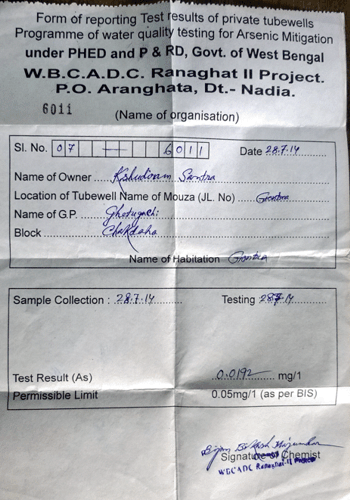


Designed by: Soumyadeep Mukhopadhyay
Starting from 2004 to 2010, 7 SAR plants have been installed in West Bengal, India. The scientific data regarding arsenic & iron concentration, pH, conductivity, etc before & after treatment of the water have been collected. Every week, around 18 samples were tested for these parameters from each plant for about three months after starting operation. The graphs show that the arsenic & iron concentration have gradually dropped below 0.01 �g/L (WHO guideline) within 45-50 days of operation from an initial very high concentration of 250 �g/L. It remaineS below regulatory level with regular operation of plants. At Kasimpore plant, it has delivered this low arsenic water for 4 years since its installation.
In some places, the community has formed water committee to take care of the plants in future. Each plant is delivering 3000-4000lts of water everyday to around 100 families. These plants have been able to supply good quality water for drinking & cooking and thus have eased up the work of the village women who earlier used to carry water from 3-4 kms away.
Many of the villagers who started using water for cooking and drinking purposes from the community plants in early 2008 are showing signs of recovery from arsenicosis. With six operational plants, six rural communities with a total population of more than 5000 have been getting their water supply from �SAR� plants.
Presently, a number of projects are under way in collaboration with Govt Universities and Governmental Developmental Agencies in some countries in the world to bring this technology closer to the people in mass scale.
DEMONSTARTED DEVELOPMENT IMPACT

Fig: PHED test result for Gotra Ghetugachi plant on 28.7.2014. The plant started operation on 20th October 2008.
Site owned by: Bhaskar Sengupta, Heriot-Watt University, Edinburgh